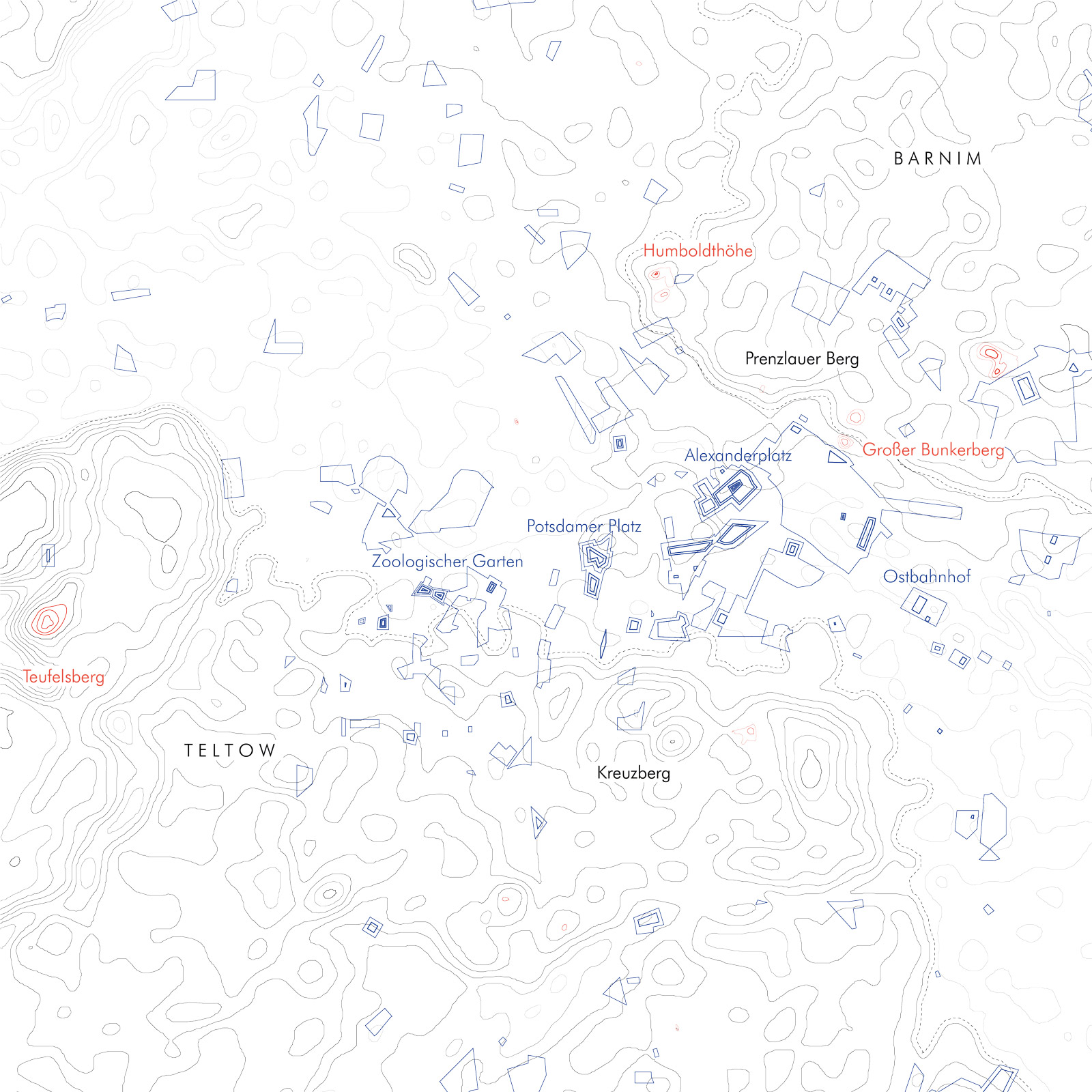MICROARTICLE #Waste & Material
Anthropocene Landscapes of Berlin
By: FAKT
MICROARTICLE Waste & Material
Wissensstadt Berlin 2021
Published on June 26, 2021
A look at today's morphology of Greater Berlin reveals a spacious landscape with a few subtle elevations and often homogeneous urban development. Parallel to that, artificial mountains and cautious clusters of higher urban developments in the inner city mark individual high points. An analytical differentiated drawing of the topography (black), artificial mountains (red) and planning heights (blue) promotes a discussion of the origins and types of development of these morphological landscapes and provides a view of their correlations and interplay.
The characteristics of these three superimposed Berlin landscapes are based on fundamentally different principles. The glacial formation is responsible for the majority of the natural relief. Even the positioning of the rubble mountains after WWII was partly planned in such a way that the landscape edge of the glacial valley was strengthened, whereas garbage mountains, especially of the cut-off West Berlin, soon found their place only at the very edge of the city – as far as the Berlin Wall allowed. The height development of the buildings and the legal planning framework, on the other hand, mostly result from the historic development of the city and do not appear to follow any superior idea.
BB2040
[EN] Berlin Brandenburg 2040 was initiated by the Habitat Unit in cooperation with Projekte International and provides an open stage and platform for multiple contributions of departments and students of the Technical University Berlin and beyond. The project is funded by the Robert Bosch Foundation.
[DE] Berlin Brandenburg 2040 wurde initiiert von der Habitat Unit in Kooperation mit Projekte International und bietet eine offene Plattform für Beiträge von Fachgebieten und Studierenden der Technischen Universität Berlin und darüberhinaus. Das Projekt wird von der Robert Bosch Stiftung gefördert.









